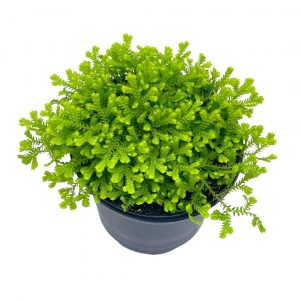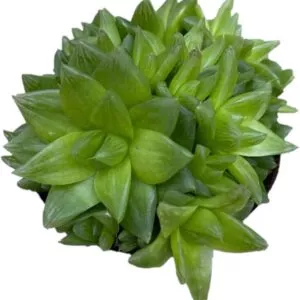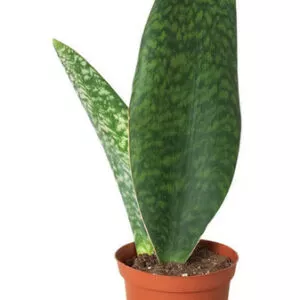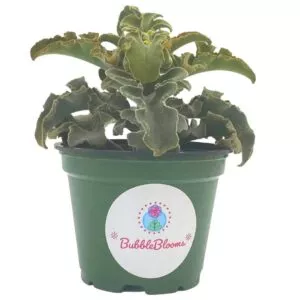No products in the cart.
Table of Contents
Finding a plant that is easy to grow with a combination of fabulous colors can be a little challenging. But the good news is that you need not look far than right here. Yes, the purple shamrock is a beauty.
It has striking purple leaves separated into three separate sections forming the shape. Yet, please do not get confused with the Oxalis triangularis. It does not relate to the true shamrock.
No, it is not. That’s why it has earned another nickname, the false shamrock. So do you want one? Then keep reading to find out how to care for this beautiful houseplant.
What is the Shamrock Oxalis?
The shamrock plant is formally known as the Oxalis regnellii, changed to Oxalis triangularis. Thus, it goes by different names, purple shamrock, false shamrock, and love plant. The perennial has trifoliate leaves in a shade of purple.
You find them growing as houseplants and as ornamental garden plants originating from South America. A fascinating thing is the leaves close up at night or if disturbed. In spring and summer, you find the flower with pink five-petaled blooms growing in clusters.
In most parts of the country, people grow them as houseplants in full sun to partial shade. Here you can find some vital information about the purple shamrocks.
Scientific Name: Oxalis triangularis
Common Name: False shamrock, purple shamrock, love plant
Plant Type: Herbaceous Perennial
Native to: South America
Shape: Flowering climber with pink-shaped flowers
Maximum Size: 2 to 12 inches (5.08 to 30.48 cm)
Watering Requirements: Water near the roots
Light Requirements: Indirect light
Preferred Humidity: Average room humidity
Preferred Temperature: 60° to 80° F (15 – 27 degrees Celsius)
Soil or Potting Medium: Acidic and alkaline soil
Fertilizer: Liquid fertilizer
Propagation Method: Separation
Toxicity: Edible leaves with low toxicity
Purple Shamrock Care Basics
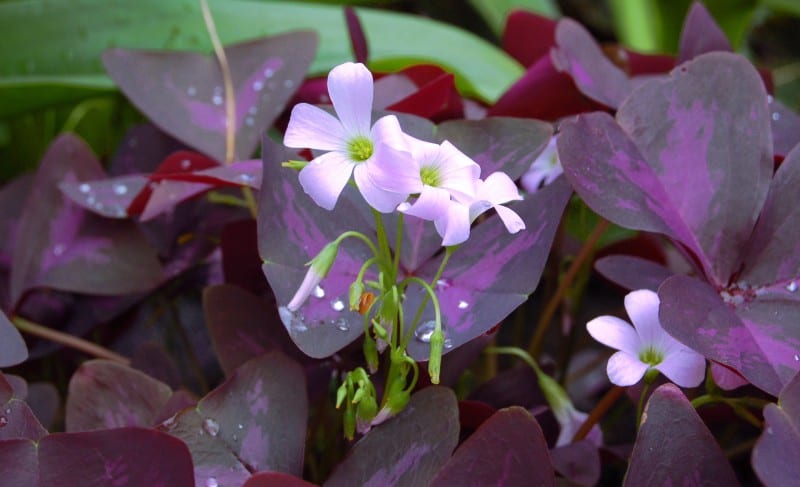
The Oxalis plants are one of the simpler houseplants to care for with low maintenance. The assortment of colors of black hues and purple makes it one of the best ornamental plants to have. Here you can find everything you need to care for your shamrock oxalis.
The Best Potting Mix to Use
Your purple foliage can grow in a standard potting mix that drains well. Yet, if your houseplant is in too heavy soil, it retains water, and the bulbs rot. So the best option is to use lightweight soil with an optional slow-release fertilizer.
Yet, if you do not have soil allowing the water to drain freely, you can make it lighter by mixing:
- One part potting mix with one part potting soil
- One part peat mixed with one part potting soil
- One part peat mixed with one part potting soil and one part potting mix
No matter what mixture you use, it helps to keep it well-drained to prevent retaining water.
Water Provision
One thing the Oxalis plants are more forgiving about is if you forget to water them. Besides, constant wet conditions will end up killing your houseplant. So water your flower as follow:
- During spring and summer in the growing season, you can water when you feel the top inch of the soil dry.
- As fall and winter arrive, your houseplant goes into dormancy. At this time, you can water it every two to three weeks.
We recommend sticking your finger about two inches in the ground. Suppose the top inch is dry to the touch. Water your flower until you see the water draining through the holes. Yet, use room-temperature water to prevent your houseplant from going into shock.
Lighting Conditions for Purple Shamrock

For the best growth, you can place your plant indoors to receive bright light. If you find the lighting too low, you will notice it is growing leggy. All you need to do is move it to a sunnier location.
Yet, if planted outside, set it in a partial sun location. While it grows excellent in a bright spot inside the window helps reduce the rays of the sun. Placing your foliage in too much sun causes the leaves to burn.
Temperature and Humidity Condition
As you can see, your shamrock plant grows well with limited sunlight indoors. So if you keep the temperature between 60° to 80° F (15 – 27 degrees Celsius), it will be fine. Still, if it drops below that range, it will stop growing.
The false shamrock plant needs a bit more humidity to thrive. But the good news is the room humidity you live in works well. Yet, if it does not receive the proper moisture, you will lose its splash of colors on the leaves.
Fertilizer Need

Like watering, you need not worry too much about feeding your Oxalis plants. The only time you need to provide the bulb with feeding is in spring and summer. During fall and winter, you can refrain from feeding.
Adding a slow-release fertilizer to the potting mix helps provide this indoor plant with nutrients for up to three months. But if you choose to continue with feeding your flower, the best is a slow-release feed. You can scatter the granules over the ground and water it well.
Or you can use a water-soluble blend when watering your plant. Fertilization is best every two to three weeks, but look out for salt buildup that can burn the foliage. To remove these salts, you can let the water run through the soil slowly for five minutes.
Oxalis Plant Propagation
The majority of gardeners agree that Oxalis triangularis division propagation is the easiest. This is because the process consists of using your parent plant to divide the bulbs. Yet if you have never done this before, check the detailed steps here.
Division
- Choose your growing purple shamrock for the best results.
- Pick a bulb with a height of eight inches or more during spring.
- Remove your flower from the pot to expose the bulbs and roots.
- Separate a few bulbs away.
- Get an empty pot ready with compost and potting soil with ample drainage holes.
- Take the bulbs and place them into the pot and give them a misting to prevent waterlogging.
- Next, place your new plant in the home in indirect sunlight.
- You can mist the bulb once a week, and after a couple of weeks, you’ll notice a new plant.
Stem Cutting
Using division to separate the tubers is one method. But you can also do stem cutting with your purple shamrock. Yet, keep in mind using this technique does take longer. For stem cutting, you use the same method by using the bulbs toward the bottom. Once you find the tubers, you incise above the bud and use the newer cutting to transplant.
Here you need to provide the plan with enough water without waterlogging it.
In stock In stock (can be backordered) Only 1 left in stock In stock
Free Shipping
$39.99
Sold By:
Aloha Hawaii Orchids
$44.99wilsonara pacific passage handsome 4
Rated 4.65 out of 5 based on 268 customer ratings00
Sold By:
Aloha Hawaii Orchids
Free Shipping
$22.99
Sold By:
Gar-Zen Botanical Design
Plumbago auriculata Cape leadwort, Blue Plumbago Ships Free.
Only 10 available and it’s in 1 people’s basket Rated 4.86 out of 5 based on 49 customer ratings00
Sold By:
Gar-Zen Botanical Design
Free Shipping
$29.95
Sold By:
CKK PRODUCTS LLC
Bald Cypress tree
Rated 5.00 out of 5 based on 1 customer rating00
Sold By:
CKK PRODUCTS LLC
$14.99
Sold By:
BubbleBlooms
$17.99Variegated String of Hearts, Ceropegia woodii, in 2 inch pot, well rooted, extremely rare, var, Variegata
Rated 4.81 out of 5 based on 279 customer ratings04
Sold By:
BubbleBlooms
USDA Growth Zone
When growing the Oxalis triangularis outdoors, it can tolerate winters in the hardiness zone six. But if your region is known for frost, the best is to bring your houseplant inside. In other hardiness zones, you can grow your plant in zones 8-10.
Potting
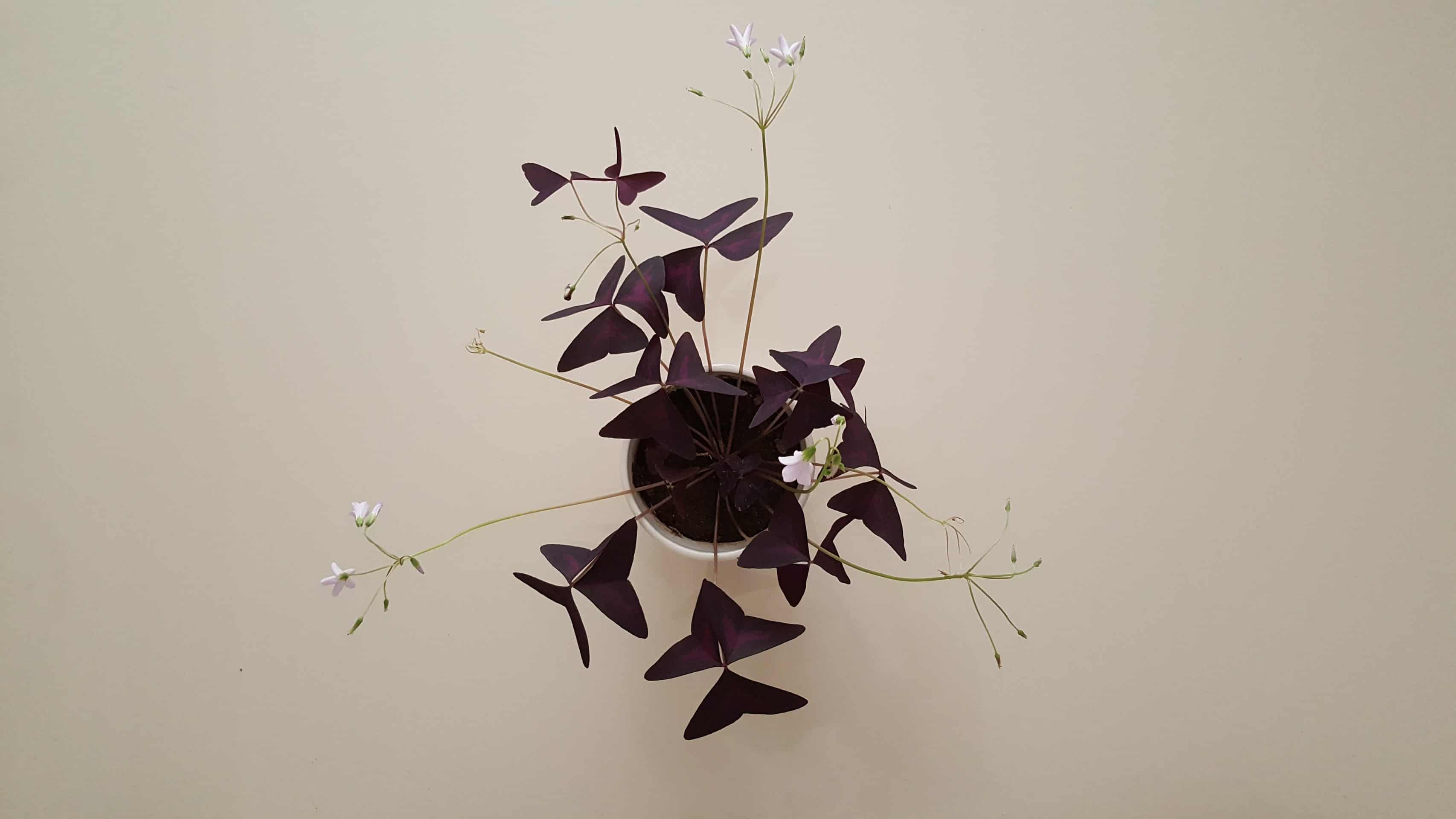
The good news is that the Oxalis does not need repotting often. You can move up one pot size bigger when separating your offsets. Fresh it up with soil to make sure it receives all the nutrients to thrive. The best time to do this is in winter, when the plants are dormant. Here are some steps you can follow:
- Please fill up your container with 3/4 potting mix and water it to settle.
- Next, place your purple shamrock on top of the soil a couple of inches apart.
- Cover up the tubers as you plant them in an inch of soil and water until the water drains well.
- Next, place your plant in a sunny location to see the new growth appear.
- The important thing is to keep the potting soil moist but not soggy.
- You can water your plant once you feel the top inch dry.
Oxalis Varieties
While the purple shamrock is a popular houseplant. You can find other varieties in the Oxalis plant collection as well. Here are some of my favorites:
Wood Sorrel

Oxalis oregana is another attractive outdoor plant with the common name of redwood sorrel. The name is given to it as it thrives under redwood trees. It loves cool, shady, and moist conditions. Yet, it is a perennial herb that grows in patches producing stemless leaves.
Candy Cane

The Oxalis versicolor is a low bush that grows upwards with trumpet-shaped white flowers. The blooms have peppermint-like red stripes giving their name Candy Cane.
Oca

While many Oxalis leaves can eat, the O. tuberosa is cultivated for the bulbs resembling potatoes. In New Zealand, these tubers go by the name of yams growing in different colors. While in Mexico, people eat it raw with lemon, hot pepper, and salt. The bulbs have nutrients such as carbohydrates and beta-carotene.
Iron Cross’ Oxalis

Oxalis tetraphylla has leaves divided into four sections. You see them decorated with purple blotches looking great next to pink blooms.
Purple Shamrock Signs It is Not Happy
While it is an easygoing perennial to have in the home, it needs proper care to thrive. So identifying problems early enough is crucial to keep them thriving. Here is a list of a few things that can make your houseplant feel a bit under the weather.
Noticing White Leaf Spots
Your purple shamrock has a purplish color. But if you notice speckles developing, it could be a fungus or too much sun. If you see the spots spreading over a large surface and feel powdery, it could be powdery mildew.
A remedy is to use a tablespoon of baking soda with 1/2 a teaspoon of liquid soap with a gallon of water. If those spots have a crusty feeling, it can be sun damage. Solving this problem is to place your houseplant in more shade.
Not Holding the Leaves Upright
Depending on how much sun the shamrock gets, it closes up. Yet, if you notice leaves drooping, it might be getting too hot for a long time. A remedy is to let your foliage go into a dormant state.
Then, leave your flower to dry out and start watering it after a few weeks. Once it receives the moisture, it restores its gorgeous color.
Frequently Asked Questions
Many people use the leaves and flowers in salads or cooked in food for coloring. Yet, it has an oxalic acid tastes that many people find exotic it is not an edible herb. Still, it does not pose any threat to humans, but it should not be used as livestock feed. Foliage that you can eat from the stem, flowers to the bulbs is the wood sorrel.
The oxalis acid found in the leaves is toxic to humans if consumed in large quantities. But if eaten occasionally in salad or foods, it poses no harm to the body.
Yes, the Oxalis bulbs multiply, allowing you to divide them when propagating it. You do this when the foliage goes into its dormant state. You can remove them from the pot and separate the smaller tubers from the side of the mother plants. Then you can plant the baby bulbs in a pot to grow.
To winterize purple shamrock, trim back its foliage as it goes dormant. Reduce watering gradually, allowing the soil to dry slightly between waterings. Place it in a cool, well-lit area indoors and resume regular care as new growth emerges in spring.
Whether you want to buy, sell or simply reach out to other plant enthusiasts, Plantly is the right place to be!
-
$15.99Sold By: BubbleBlooms
In stock
Garden selaginella, 4 inch, Gold Club Moss, Golden kraussiana
Only 96 available and it’s in 1 people’s basketRated 4.81 out of 5 based on 279 customer ratings00Sold By: BubbleBlooms -
$12.00Sold By: Beauties & Beasts
In stock
Succulent -Haworthiopsis cymbiformis
Rated 4.83 out of 5 based on 24 customer ratings00Sold By: Beauties & Beasts -
Free Shipping$57.95 – $61.59Sold By: A&K Plants
In stock
Shark Fin Snake (Sansevieria Masoniana) – Rare Snake Plant | 6-inch pot
Rated 4.95 out of 5 based on 66 customer ratings00Sold By: A&K Plants -
$15.99Sold By: BubbleBlooms
In stock
Kalanchoe Feltbush, Felt bush, Velvet elephant ear, Elephant’s ear kalanchoe beharensis, Kalanchoe Fang Felt Plant
Only 95 available and it’s in 1 people’s basketRated 4.81 out of 5 based on 279 customer ratings03Sold By: BubbleBlooms




